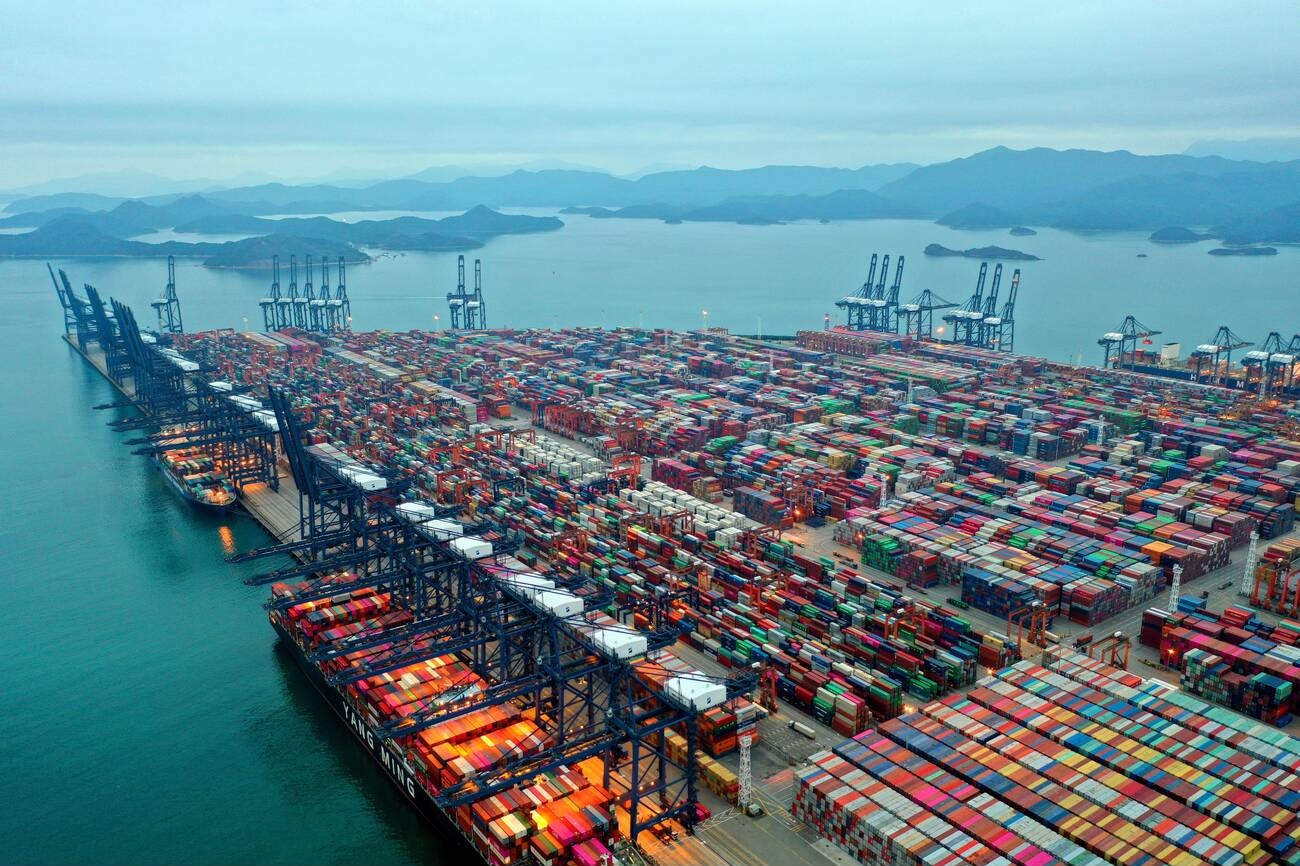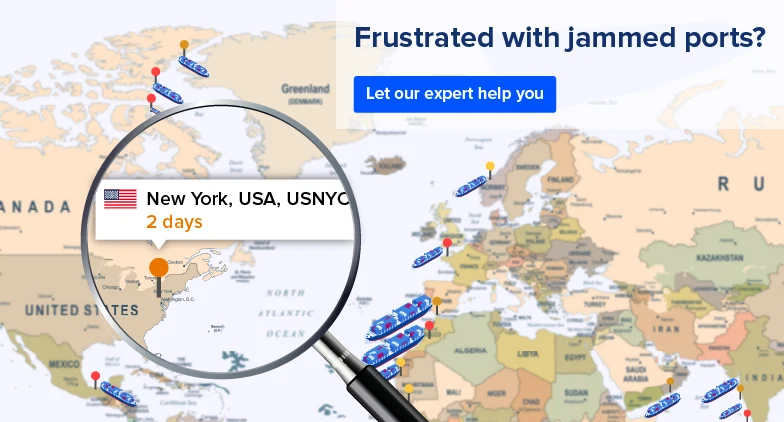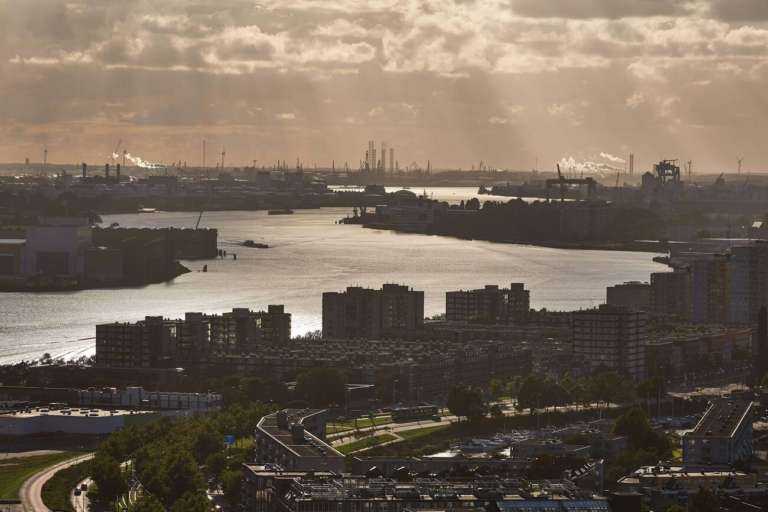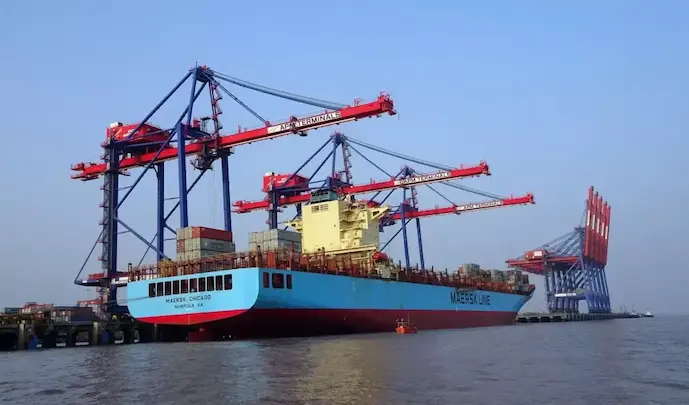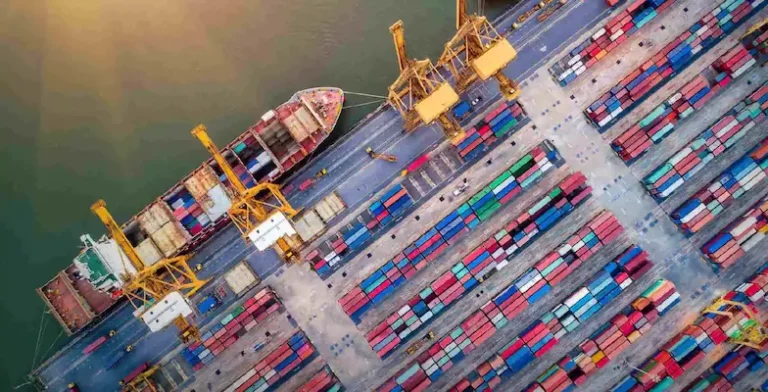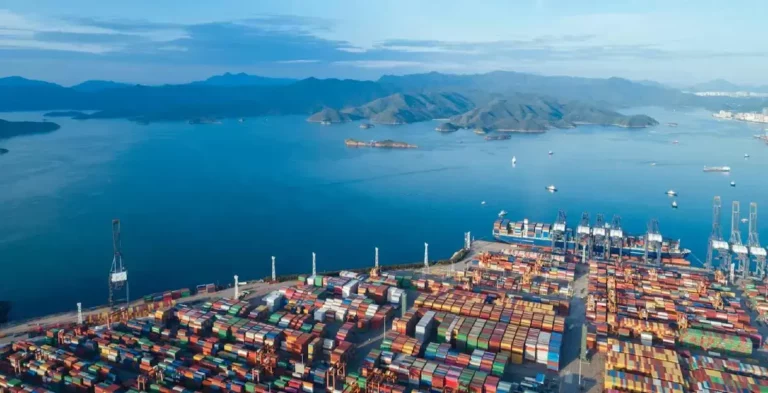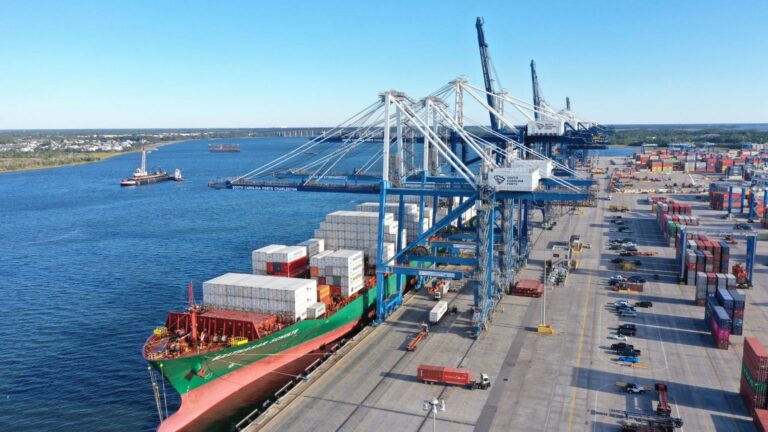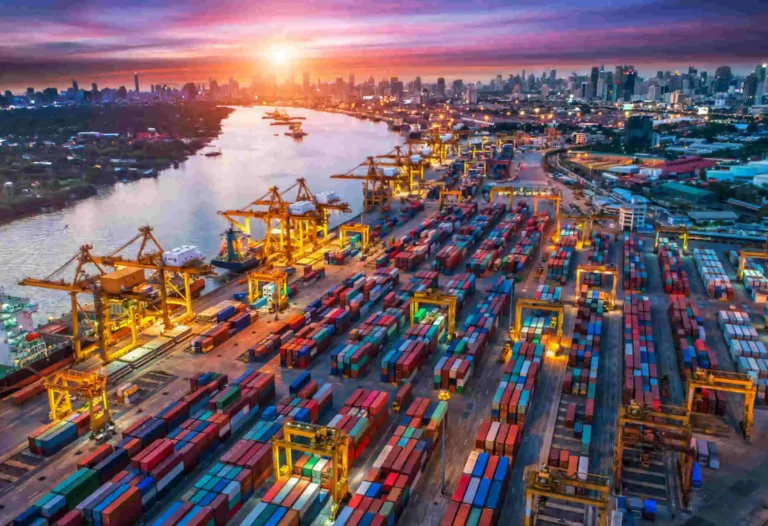10 Major Mexico Ports: Gateways to Global Trade
Mexico’s vast coastline isn’t just beautiful beaches – it’s a hub for global trade. With over 117 seaports lining its 7,145 miles and supported by a network of highways, railways, and airports, Mexico boasts a massive port infrastructure. This strategic positioning makes them crucial for the global economy.
Recent investments have doubled port capacity, and Mexico’s ports now efficiently move goods across industries and continents. Imagine them as the conductors of a global symphony, ensuring timely deliveries and fostering economic growth through efficient supply chains and reduced transportation costs.
To understand the true reach of Mexico’s maritime influence, Go Comet brings you the top 10 major ports of Mexico!
Port of Manzanillo: A Pacific Trade Hub
As Mexico’s largest port on the Pacific Coast, the Port of Manzanillo stands as a maritime giant. Renowned for handling Pacific Ocean cargo, its recent expansion, backed by a $230 million investment, signals strategic growth. The increase in capacity from 1.4 to 2 million TEUs in five years positions Manzanillo as a vital player in international logistics with significant movement of containers.
CEO José Antonio Contreras spearheads transformative initiatives, upgrading storage yards, equipment, and shipping infrastructure. With over 600 new jobs created, Manzanillo is not just expanding physically but also as an economic catalyst for the region. Anticipating significant growth by 2045, Manzanillo is shaping the future of international trade on the Pacific Coast.
Port of Lázaro Cárdenas: Key Features and Operations
Situated on the Pacific Coast, Lázaro Cárdenas emerges as a strategic deepwater port with impressive capabilities. Boasting five public and four private terminals, it’s on track to expand its annual TEU capacity to 2.2 million, eyeing an ambitious 4.1 million TEUs by 2030.
The port’s versatility is highlighted by its integration of road and rail transport, with exclusive rail service by Kansas City Southern Railway. This positions Lázaro Cárdenas as a promising alternative amid congestion at U.S. ports. Key projects include pier construction, channel dredging, and road infrastructure, all geared toward enhancing overall efficiency. As a transforming industrial hub with a focus on adaptability, Lázaro Cárdenas is poised to solidify its position as Mexico’s second busiest port.
Port of Ensenada: Connecting Northern Mexico
Strategically located in the heart of Baja California, the Port of Ensenada stands as a crucial gateway connecting Northern Mexico to the world. Approximately 80 miles south of San Diego, California, Ensenada’s industrial harbor has been a focal point of maritime activities since the early 1900s, making it one of Mexico’s busiest ports for major cruise lines.
Ensenada’s charm extends beyond maritime activities, inviting exploration of attractions such as the La Bufadora blowhole. With eco-friendly measures and a comprehensive waste management system, Ensenada emphasizes sustainability while facilitating seamless connectivity for travelers exploring the northern regions of Mexico.
Port of Veracruz: Historical and Modern Importance
Nestled in the Gulf of Mexico, the Port of Veracruz boasts historical significance intertwined with modern eminence. Recognized as Mexico’s largest trade hub, it plays a pivotal role in handling agricultural bulk, automobiles, and containers. Positioned just over 300 kilometers from Mexico City, Veracruz efficiently manages the export of bulk grains, minerals, fluids, coal, and fertilizers.
Its strategic importance extends to the automotive industry, serving as a key transportation center for international car companies with factories in the State of Puebla. Despite its thriving role in commerce, Veracruz faces environmental challenges amid expansion, navigating the delicate balance between economic development and environmental preservation.
Port of Altamira: Industrial and Trade Gateway
With a legacy spanning three decades, the Port of Altamira has evolved into a dynamic industrial and trade gateway. Established in the late 1980s, it claims the top spot for petrochemical fluid movement, ranking second in automobile movement in the Gulf of Mexico and fourth in total national freight and containers.
Backed by a $200 million investment, Altamira’s modernization aims to position it as a focal point for national and international investment. The Altamira Industrial Port Complex, with 14 marine terminals handling close to 22 million tons annually, exemplifies sustained growth. Ongoing projects, including the construction of the country’s most advanced fuel terminal, underscore Altamira’s commitment to environmental stewardship and continued relevance.
Port of Guaymas: An Emerging Economic Force
The Port of Guaymas, situated in southwestern Sonora estado, holds strategic significance as a vital maritime gateway to the Gulf of California. With a history dating back to 1769, Guaymas plays a pivotal role in the export of copper, sulfuric acid, and agricultural products.
Despite challenges in the fisheries sector, Guaymas remains a critical player in agriculture and mining. Recent initiatives, including a cost-effective wireless solution for security and surveillance, showcase Guaymas’s commitment to facilitating imports and exports across continents. As an emerging economic force, its resilience and adaptability position Guaymas as a key maritime hub in northwestern Mexico.
Port of Tampico: A Diverse Cargo Hub
Nestled along the Gulf of Mexico, the Port of Tampico weaves a rich tapestry of maritime history. Originally established as a Spanish colonial port in the late 18th century, Tampico evolved into a bustling hub for trade, serving as a gateway for goods flowing between Mexico and the rest of the world. Its strategic location at the mouth of the Pánuco River has contributed to its historical significance. In the early 20th century, the discovery of oil in the region propelled Tampico into a prominent position in the petrochemical industry.
Today, it stands as a linchpin for the petrochemical sector, with state-of-the-art infrastructure tailored to handle the complexities of oil and gas shipments. Beyond its role in the petrochemical industry, Tampico’s port handles a diverse range of cargoes, showcasing its adaptability in the modern era.
Port of Mazatlán: Tourism and Trade Confluence
Mazatlán, a coastal gem on the Pacific shores of Mexico, seamlessly intertwines its identity as a thriving tourist destination and a pivotal cargo-handling port. Renowned for its pristine beaches, vibrant culture, and historical charm, Mazatlán beckons travelers seeking a perfect blend of sun-soaked relaxation and cultural exploration. In tandem with its allure as a tourist haven, Mazatlán harbors a bustling cargo port that plays a crucial role in facilitating trade along the Pacific coast.
Its strategic location serves as a gateway for the import and export of goods, connecting Mazatlán to international markets. The juxtaposition of these dual roles underscores Mazatlán’s multifaceted significance, positioning it as a dynamic coastal city where the rhythmic pulse of tourism harmonizes with the pragmatic beat of maritime commerce.
Port of Coatzacoalcos: Oil and Industrial Focus
The Port of Coatzacoalcos, with its roots dating back to 1825, stands as a key player in Mexico’s maritime history. Over the years, it has adapted to economic shifts, particularly in the oil and industrial sectors. Coatzacoalcos emerged as a thriving economic hub during the early 20th century, strongly tied to oil and trade activities. The port maintained its significance through historical events, including the Mexican Revolution and the opening of the Panama Canal, by focusing on oil and agriculture.
Post the Mexican Revolution, Coatzacoalcos witnessed key developments in the petroleum industry, with the inauguration of the Minatitlán-Salina Cruz oil pipeline and the establishment of petrochemical complexes. By the late 20th century, Coatzacoalcos experienced a cargo-handling peak, exceeding 3 million tons. Recent plans for a strategic investment of $4-5 billion aim to develop Coatzacoalcos into an LNG export hub, further enhancing its economic significance and potentially reshaping its role in international trade. The port’s evolution stands as a testament to its resilience and adaptability in the face of changing economic landscapes.
Read more: Top 15 Busiest Ports in the World – Updated list
Port of Progreso: The Gateway to the Yucatán
The Government’s initiative to modernize and expand the Port of Progreso marks a significant leap for Yucatan in terms of port logistics and economic development. Over the last decade, the port has faced challenges due to its current draft limitations, hindering its capacity to accommodate larger vessels prevalent in today’s shipping industry.
The ongoing expansion project, including dredging five million cubic meters, aims to deepen the port’s navigation channels, allowing it to handle vessels with capacities of up to 100,000 tons. Presently, the port can only accommodate ships carrying 36,000 to 40,000 tons. The initiative aligns with evolving trends in maritime transportation, responding to the demand for deeper channels, longer docks, and more extensive operating areas driven by the maritime industry’s pursuit of economies of scale.
Economic Impact of Mexican Ports
Mexico’s vast territory (almost 2 million km²) and population (126.4 million) make it a major player in Latin America. But its economic rise is even more impressive, now ranking as the 16th largest global economy. Strategic logistics hubs are a key driver of this success and the Free Trade Agreements with 46 countries further solidify this position, fostering industrial and manufacturing growth in key states like Tijuana and Ciudad Juarez.
The maritime sector is a powerhouse for jobs. Major ports like Manzanillo and Lázaro Cárdenas directly employ over 6,000 people, with the entire sector (including port operations, logistics, and transportation) sustaining over 1.7 million jobs across various roles. From dockworkers to administrative staff, Mexican ports contribute significantly to national livelihoods. Economically, these ports are critical. They generate roughly $20 billion annually for the national GDP, highlighting their central role in international commerce. These figures showcase the immense economic impact of Mexican ports, not just as job creators but also as substantial revenue contributors.
Beyond immediate benefits, ports act as catalysts for regional development. Hubs like Altamira and Ensenada attract investments and promote industrial clusters, creating job opportunities and influencing diverse sectors beyond just cargo operations.
However, challenges remain. Upgrading infrastructure, dredging channels, and investing in modern equipment are essential to meet the growing demand for efficient cargo handling. Additionally, balancing economic development with environmental sustainability is critical. Implementing eco-friendly measures, waste management systems, and adhering to strict environmental regulations are all opportunities for Mexican ports to demonstrate their commitment to a healthy future.
In essence, Mexico’s ports are not just gateways to the world, but engines for its economic and social growth. Addressing infrastructure and environmental concerns will ensure they continue to thrive in the years to come.
The Role of Technology in Port Operations
Automation and Efficiency in Port Operations
Automated cargo handling systems, intelligent container tracking, and robotic technologies streamline operations, reducing turnaround times and operational costs. Automation not only improves overall port productivity but also positions Mexican ports as technologically advanced players in the global maritime industry.
Digitalization and Data Management
Digitalization plays a pivotal role in port operations by enabling seamless information flow. Implementing digital platforms for documentation, communication, and data analytics enhances transparency and reduces paperwork. Efficient data management systems contribute to better decision-making, optimizing port processes, and bolstering overall operational effectiveness.
Innovations in Maritime Logistics: Companies like GoComet
Executing and monitoring maritime logistics involves a myriad of complexities that impede operational efficiency and disrupt the smooth flow of supply chains.
Firstly, communication breakdowns are one of the most frequent occurrences, that form evident blind spots in the supply chain pertaining to the vessel locations, cargo statuses, and port activities. Such disruption in traditional communication channels remains highly susceptible to a lack of agility in responding to dynamic situations.
The manual approach for tracking and managing shipments and inventory often amplifies the risk of errors, in cargo handling.
Besides these real-time problems, an operational system without hovering data analytics and predictive technologies limits the ability to foresee potential disruptions or optimize routes. Thus, today, the era of technology and demand for goods across the globe has led to an eventuality to adapt to modernization to navigate the complexities of global trade effectively offering an enhanced supply-chain visibility.
In this context, companies like GoComet play a pivotal role in resolving the challenges posed by the absence of internet connectivity and intuitive technology in maritime logistics. GoComet leverages advanced technologies to introduce transparency and real-time visibility into the supply chain. Through its platform, GoComet provides a centralized system that enables seamless communication among stakeholders, ensuring instant updates on vessel movements, cargo statuses, and port activities. The platform’s automation capabilities streamline data processing, reducing the risk of errors and enhancing accuracy in inventory management.
Enabled by advanced supply chain visibility solutions, GoComet empowers the maritime logistics industry to tackle challenges associated with manual processes and disconnected operations. By fostering a more agile, adaptive, and technology-driven supply chain ecosystem, these solutions ensure that Mexican ports stay ahead in global trade and transportation advancements.
